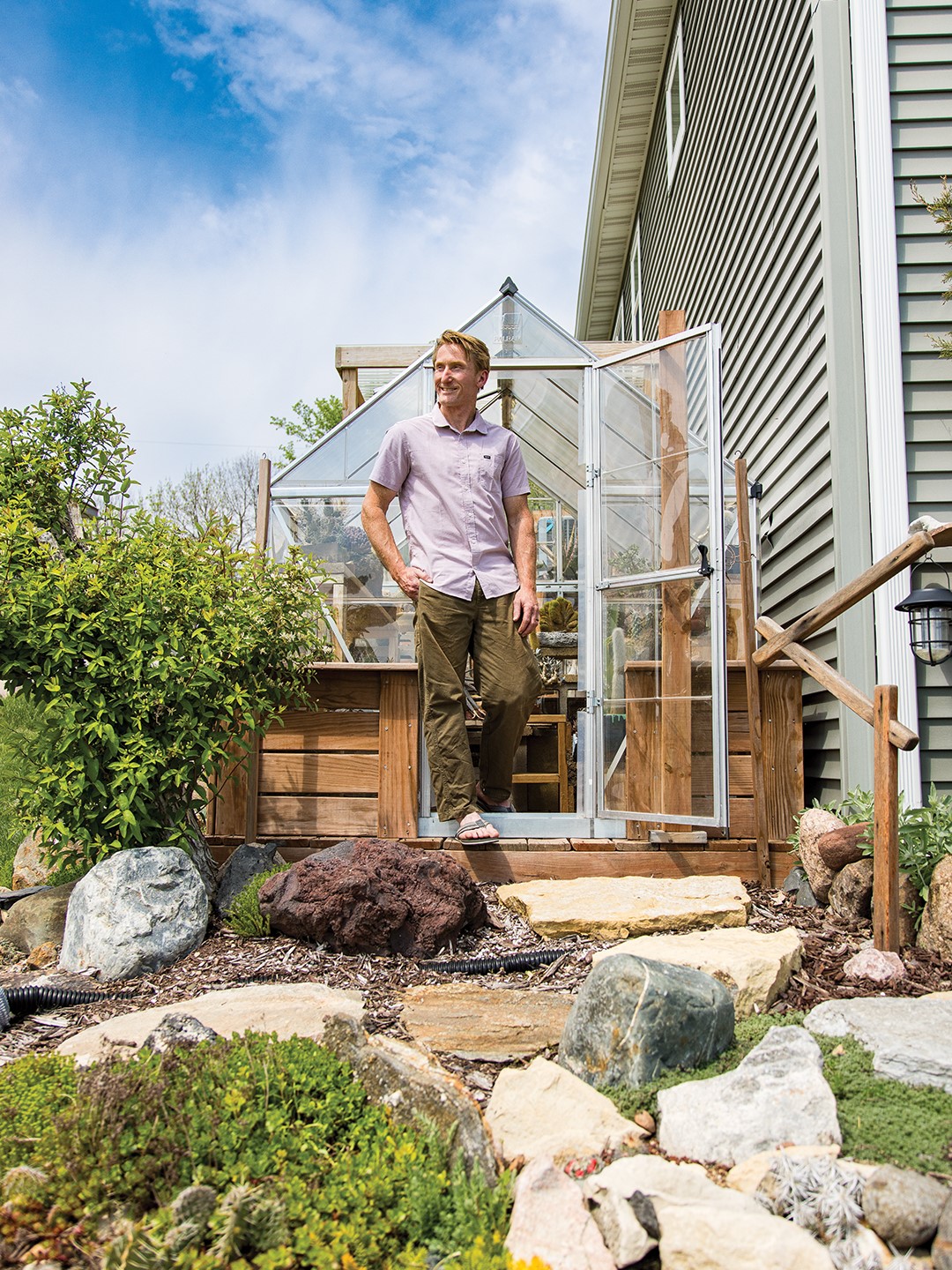
Photos: Chris Emeott
Garden expert weighs in on the benefits of leafy greens.
Sick of romaine? Take your daily portion of greens up a notch with some of Lee’s favorite leafy veggies. There are three to know:
Bok Choy
A vegetable widely used in Asian cuisine, bok choy has a bulbous stem that extends into wide leafy greens. Beautifully crisp, with sweet-tasting roots and ruffled leaves, bok choy can be roasted whole, though Lee prefers to use the vegetable in soup or sauteed with garlic.

Bok choy is a spring and fall crop. Plant seeds in April for summer harvest or in July to harvest before frost.
Mustard Greens
With a peppery flavor and sharp bite, mustard greens are a great wild card to incorporate into salads, though many prefer to mellow out the vegetable’s intense flavor by boiling or sauteing.
Mustard greens grow from spring to fall. Seed in late April to harvest through summer and fall.
Watercress
This aquatic superfood is a favorite of Lee’s family. With dark leaves and a crisp texture, watercress can be added to grains, soups, salads and more. The health benefits alone (think lowering blood pressure, cancer prevention and stronger bones) make this leafy green worth a try.
Watercress thrives in running water or moist soil, like streams. It is an invasive species, so practice caution if growing your own. For best flavor, harvest in cooler months.

Leafy greens are more than just a salad staple.
Take it from a vegetarian who often can’t stomach the idea of yet another salad—leafy greens, cooked in new ways, can actually taste good and amplify a recipe’s look and flavor as much as they nourish.
With a variety of textures, flavors and colors, these nutrient-rich vegetables can be sautéed and baked, pureed and wrapped. Think kale chips, green smoothies, stir-fry and soup, and you’re still on the tip of the iceberg. Even the most leaf-averse can find something to enjoy!
To get an introduction into growing and preparing leafy greens, we turned to local expert Mhonpaj Lee, whose Hugo-based farm Mhonpaj’s Garden became the first Hmong-owned certified organic farm in the state in 2010.
Her responses have been condensed for clarity.
How would you define a leafy green? What vegetables fall under the “leafy greens’’ category?
I define leafy greens as salad greens, pot herbs, vegetable greens or simply greens like plant leaves eaten as vegetables — because they are leafy and green and nutritious, they’re basically all leafy greens!
What are the top three most nutrient-rich greens? What are some health benefits associated with them?
Kale is usually in the spotlight because of its nutritional value as it is rich in vitamins A, C, K and B6, calcium and magnesium. Watercress is a favorite in our community. It’s an aquatic plant, and it has a lot of vitamin K and about four times as much beta carotene as apples. Spinach provides 6.5 milligrams of iron in every ¾ cup. If you’re iron deficient, the combination of iron and vitamin C in the Malabar spinach variety helps with absorption.
Which varieties are easiest to grow in home gardens, specifically in Minnesota?
In Minnesota, everything grows! If you have a raised bed, try salad greens in one corner (as a one-time growing) and in the other corner try greens that’ll keep growing like kale and Swiss chard. You should diversify your bed because you can’t eat one variety all season long!
When and how should leafy greens be planted in outdoor gardens?
In spring, you want to seed in a warm place as soon as possible, about three to four weeks prior to the frost date … [or] get planters from a professional. They all take around 30 days to grow from seed, except kale, which takes longer. You also need to incorporate compost into your soil before planting. If your soil has no vitamins, you’re going to have yellow, unhealthy plants.
How do you know when leafy greens are ready to be harvested? Is there any technique for harvesting leafy greens?
It’s all about what you grow. Usually, when a plant has lot of leaves (about 40–80 days from seed) it’s mature. For Swiss chard, eat the leaves, not the shoots [for continued growth]. For kale, leave the newest leaves on top, but harvest from the bottom when the leaves are young and tender and prune often. Kale knows how to get old and doesn’t know to reproduce if you don’t eat it.
Mhonpaj Lee’s Vermicelli Salad Recipe

- 6–12 oz. dry rice noodles
- 1 lb. lean boneless pork fillet
- 3 Tbsp. soy sauce
- 1 Tbsp. garlic powder
- ½ cup carrot, julienned
- ½ cup cucumber, seeded and julienned
- ½ cup mint or cilantro chopped
- ¼ cup peanuts, chopped
- 3 prepared egg rolls or 3 spring rolls
- ¼ cup Vietnamese fish sauce or sauce of choice
- 1–2 cups Malabar spinach or preferred leafy green
Cut pork into thin slices. Marinade pork strips in soy sauce and garlic powder for 1 hour. Slice up vegetables and cilantro, set aside. Stir fry or grill pork until no longer pink; set aside and keep warm. Boil water in large pot; add rice noodles and cook for 1–2 minutes; drain water. Heat egg rolls and cut into 1-inch pieces. To noodles, add vegetables and leafy greens and top with pork strips and egg roll pieces. Sprinkle peanuts to garnish and serve with a small dish of Vietnamese fish sauce.
Inspired by Rice Vermicelli Salad recipe from food.com.
mnvegetableorganic.weebly.com
651.278.1009
Facebook: Mjonpaj’s Garden






















